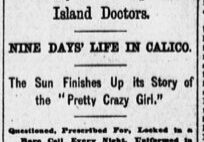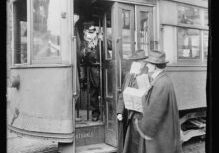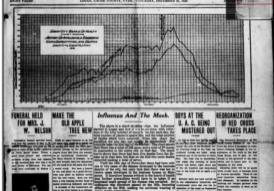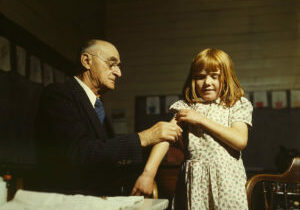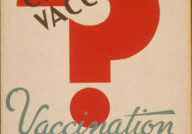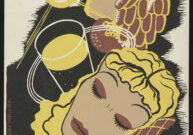Lesson Plans
Outbreak – A World Wide Health Crisis
As the world confronts global health problems such as epidemics or pandemics, involve your students in an authentic lesson that looks at past primary sources to increase understanding of health related issues. Encourage students to use past and current information and digital tools to research, make informed decisions and contribute to their own and their community’s health information.
Mandatory Vaccinations: Yea or Nay?
In this three-part lesson students discuss the proper role of government in making public health decisions. In Part I, students discuss their prior knowledge of vaccinations and the purpose of vaccinations. In Part II, students assume the roles of members of Congress to determine if they will vote on a bill to require parents to vaccinate their children. Students will use primary sources to explore the issue, then will work in small groups to discuss both sides of the argument. Finally, students will state and support their vote for or against the bill. In Part III, students conduct independent research in order write their answer to the Essential Question.
Vaccinations, Science, and the Law
In this two-part lesson students explain the role of science in informing public policy. In Part I, students discuss their prior knowledge of vaccinations and the purpose of vaccinations. In Part II, students assume the roles of members of Congress to determine if they will support a bill to require the federal government to compare the health outcomes of vaccinated and unvaccinated children. Students use primary sources to explore the issue and then will work in small groups to discuss the most important factors affecting Congress’s decision. Finally, students interview an adult about their knowledge and opinion of science and public policy, particularly related to vaccinations.
TB or Not TB: Disease Prevention
In this lesson, students use the example of tuberculosis to learn how scientists, the government, and public-interest organizations work together to ensure that the public has equal access to disease-prevention information and support. In Part I, students discuss the role of science in public health and play the role of “Disease Detectives” to learn more about tuberculosis from primary sources. In Part II, students participate in a gallery walk to analyze historic public health posters about disease prevention to learn about the people and groups responsible for fighting tuberculosis. In Part III, student groups apply what they have learned to create their own posters about disease prevention today.
